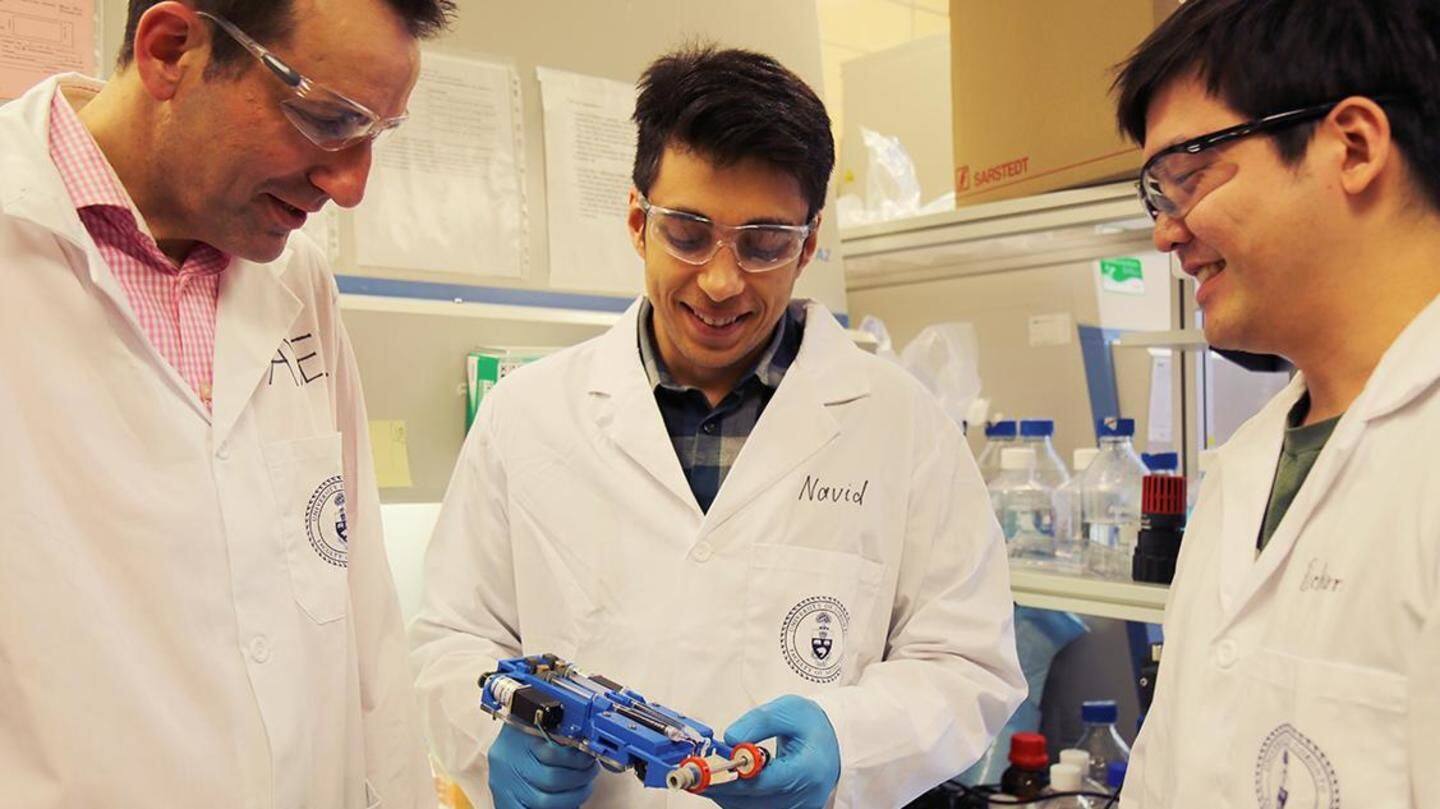
Portable 3D printer can heal skin wounds in minutes
What's the story
In a first, researchers from the University of Toronto in Canada have developed a portable 3D skin printer that can heal deep skin wounds within minutes. In such wounds, usually all three layers of the skin, the epidermis, dermis, and hypodermis, are heavily damaged. The printer can deposit even layers of the missing tissue to the skin and cover the wound.
Problem
Current treatment methods lead to poor healing outcomes
Currently, deep skin wounds are treated through a process called split-thickness skin grafting, wherein skin from a healthy donor is grafted onto the damaged skin. For large wounds, a good amount of healthy graft skin is required which is rarely available. This often leaves some wounded area "ungrafted" or results in the new skin not having traversed through all the layers.
Information
Overcoming barriers to improve skin-healing process
"Most current 3D bioprinters are bulky, work at low speeds, are expensive and are incompatible with clinical application," said researcher Axel Guenther. Whereas, the portable 3D skin printer is a handheld device the size of a small shoe box and weighs less than a kilogram.
Solution
The handheld skin printer resembles a white-out tape dispenser
It features a micro-device that forms tissue sheets for the skin. The bio-ink running along the inside of each tissue sheet contains two things: collagen which is the most abundant protein in the skin's dermis layer and fibrin which is a protein involved in wound healing. The printer also does away with washing and incubation stages required by several conventional 3D printers.
Information
The device can tailor tissues to specific patients and wounds
The portable 3D skin printer might get several additional capabilities like expanding the size of the coverable wound areas. With this, researchers aim to start running clinical trials on humans soon and eventually revolutionize burn care.